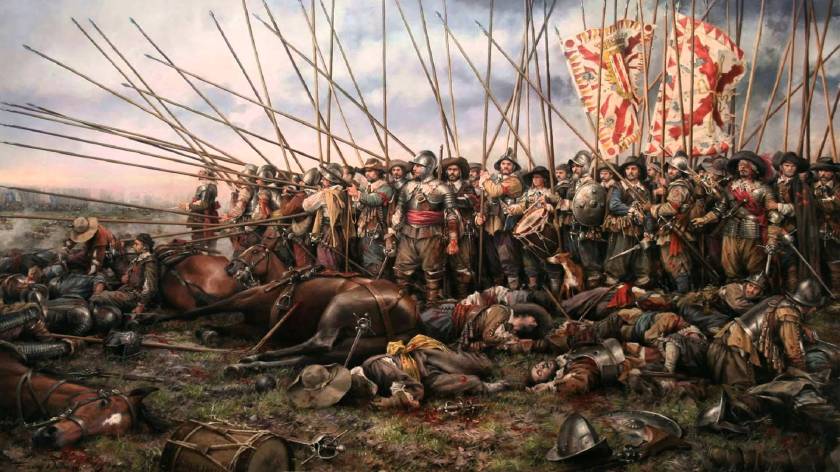It looks much like you’d expect: there was a lot of opportunistic looting after a battle. Sometimes, if the armour was old or broken, and the victorious army didn’t want to lug it home to recycle the materials, it might be left on the bodies. You see this at the graveyard from the Battle of Visby (1361), whose archaeological excavation found a number of bodies buried in old, outdated armour that apparently wasn’t worth saving. In some cases, the valuable pieces were chopped off the dead and carried away; the recently discovered Staffordshire hoard (7th century) contains bits of gold that were broken off swords, a helmet, and other things most likely looted from a battlefield, carried off to a crossroads, and buried for later recovery (this is the most recent interpretation, at least). Of course, the victors could upgrade their own equipment from those that had died. In fact, the 9th century poem Beowulf talks about looting weapons from corpses, and later Scandinavian laws (11th century) tried to make this illegal which may suggest it happened a lot. Broken equipment could always be recycled or repaired. Leather straps wouldn’t be much good on their own, but iron is easy to rework and there is archaeological evidence of broken weapons and tools being recycled, as well as broken armour could being repaired.
Regarding Byzantine customs (at least in the Middle period) it was literally the textbook instructions to:
a)Bury your own dead and;
b)Leave the enemy unburied
More specifically, from the Taktika of Leo the Wise:
Take special care to bury the dead, without finding excuse in the weather, or the time, or place, or fear, whether you are the victor or the defeated; it is always good and proper to show piety towards the dead…Each of the soldiers, seeing what is happening, will think of the same happening to himself. If he sees them lying unburied he will think of himself and carry this insult badly; he would rather flee than fight and be left unburied. But if he is granted honor after his fall, and a good memorial, and he sees that, he will not cower from fighting willingly.
and
You will demoralize the enemy when, after a battle, you are able to secretly bury the fallen from your own army, but leave the bodies of the enemy as they are.
There were, in fact, a few battles we know of that the enemy dead were left unburied and could be seen years and even decades later, e.g.
The battle of Achelous (917): The Bulgarians under Symeon destroy the Imperial army of Domestikos Leo Phokas. The historian Leo the Deacon, writing about seventy years later, mentions that the bones of the dead could still be seen lying on the field, to that day
The battle of the Spercheios (997): Domestikos Nikephoros Ouranos finds a ford over the river Spercheios and secretly crosses it at night, massacring the unsuspecting Bulgarians who are camped on the other side. Twenty one years later, Emperor Basil passes through the area during his victory tour of Southern Greece. According to Skylitzes , he is awed at the sight of the bones still visible.
The battle of Sevasteia (1070): Manuel Komnenos (eldest brother of the later Emperor Alexios) is leading an army through a pass between Sevasteia and Koloneia when a Turkish force ambushes him and massacres his men. Next year, Emperor Romanos passes through the same pass on his way to Manjikert. Michael Attaleiates, who is campaigning with the Emperor in person, writes that the rotting corpses of their comrades were not a “welcome sight” for the men (talk about understatement!)



Reblogged this on Windows into History (Reblogs and News) and commented:
Suggested reading – a lot of interesting information here. Reblogged on Windows into History.
LikeLike
Reblogged this on First Night History.
LikeLike
The battle of Visby was fought in midsummer. It seems likely the imperative was to get the dead buried as soon as possible; meaning that stripping them all of their mail was not a priority.
LikeLike